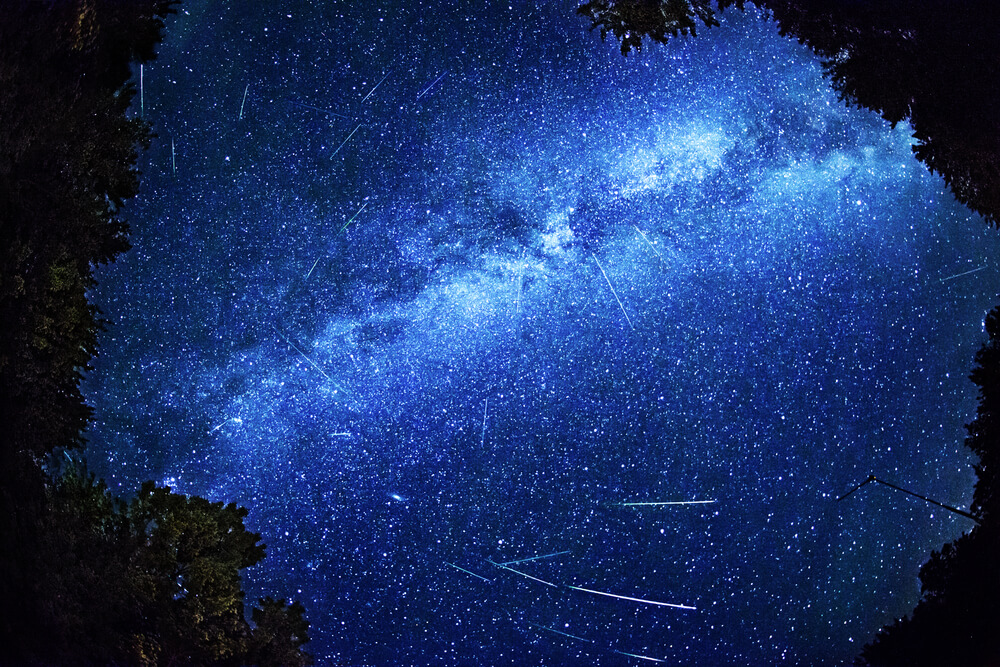The brightest astronomical phenomena that await us in 2022
The remaining nine months of 2022 will be full of astronomical spectacular events, including eclipses, meteor showers and planetary conjunctions. Edition The Washington Post collected for you the best and brightest.

Photo: Shutterstock
Lunar eclipses
There will be two total lunar eclipses this year, and both will be visible from the US, and both, oddly enough, will last an hour and 25 minutes. Lunar eclipses occur when the Earth comes between the Sun and the Moon, largely blocking out direct sunlight and instead allowing the lunar disk to sink into a blood-red glow.
15 May 2022 years
The first lunar eclipse occurs on the night of May 15th. A slight dimming of the lower left side of the moon will begin around 21:32 pm ET. A more noticeable blackout will begin at 22:27.
This eclipse will be optimal for viewers in the eastern part, where they will see the entire cycle. On the Pacific coast and in the west, the eclipse will begin before moonrise, but some of its later stages will be visible.
The phenomenon will end at 01:55. During a total eclipse, the Moon will be plunged into near-total darkness.
On the subject: An important step in the conquest of space: NASA created oxygen on Mars
Astronomers rate the color of lunar eclipses on the Danjon scale, which ranges from 0 to 4. Values near zero represent an almost invisible moon that is dark enough to almost blend into the surrounding night sky. Total lunar eclipses rated 4 are copper and slightly orange in color, sometimes with a bluish rim. The amount of pollution in the atmosphere affects what color is visible.
November 8 2022 years
The second total lunar eclipse is scheduled for the morning of November 8th. This time, the west coast is the best for viewing.
It will begin at 04:09 ET and peak around 06:00 ET before the Earth's shadow gradually moves away from the Moon starting at 06:43.
There will be partial solar eclipses on April 30 and October 25, but none of them will be visible from North America.
Meteor Rain
There are many meteor showers every year, but only two - the August Perseids and the December Geminids - are really worth seeing.
Perseids: August 12-13
The Perseid Peak falls on the night of August 12-13. They were formed by pebble-sized fragments of interstellar debris left behind by Comet Swift-Tuttle, which last passed Earth in 1992. These fragments burn up in its outer atmosphere as they approach Earth at a speed of 37 miles (60 km) per second. As a result of combustion, light is produced that shimmers in shades of green, purple, pink and orange.
You may be interested in: top New York news, stories of our immigrants and helpful tips about life in the Big Apple - read it all on ForumDaily New York
But the almost full moon will spoil the meteor show this year to some extent - it will shine most of the night. However, the Perseids will outshine even the pale, inevitable whiteness of moonlight.
Geminids: December 14-15
Geminids are caused by tiny fragments of an asteroid known as 3200 Phaeton. They have a slower speed of 22 miles (35 km) per second, which means that their twinkling trails are visible in the night sky for longer.
The Perseid meteor shower has many colors of shooting stars.
Conjunction of Jupiter and Saturn
From April 30 to May 1, Venus and Jupiter will nearly intersect in the morning sky. At this time, look to the southeast in the wee hours.
And while the most impressive lineup of planets, not technically a conjunction, will occur on the morning of June 23rd, Mercury, Venus, Mars, Jupiter and Saturn will line up with Venus and Jupiter being the brightest.
Skywatchers should be facing southeast at morning twilight, with Mercury on the lower left and Saturn on the upper right. Uranus can be seen beyond Saturn, but this requires dark skies and a telescope.
Read also on ForumDaily:
Top 15 most breathtaking caves in the world
Eight bright Hollywood celebrities with Ukrainian roots
The secrets of air travel: the best places on the plane for passengers with aerophobia
'Lemon Law': An incredibly useful rule in the US that many immigrants do not know about
Top 14 Rules in English You Can Safely Ignore
Subscribe to ForumDaily on Google NewsDo you want more important and interesting news about life in the USA and immigration to America? — support us donate! Also subscribe to our page Facebook. Select the “Priority in display” option and read us first. Also, don't forget to subscribe to our РєР ° РЅР ° Р »РІ Telegram and Instagram- there is a lot of interesting things there. And join thousands of readers ForumDaily New York — there you will find a lot of interesting and positive information about life in the metropolis.











